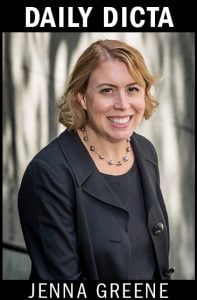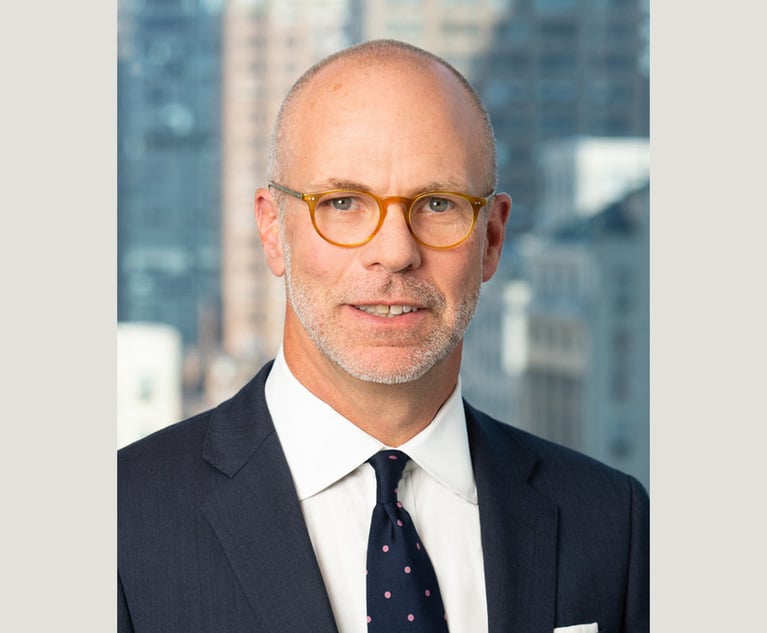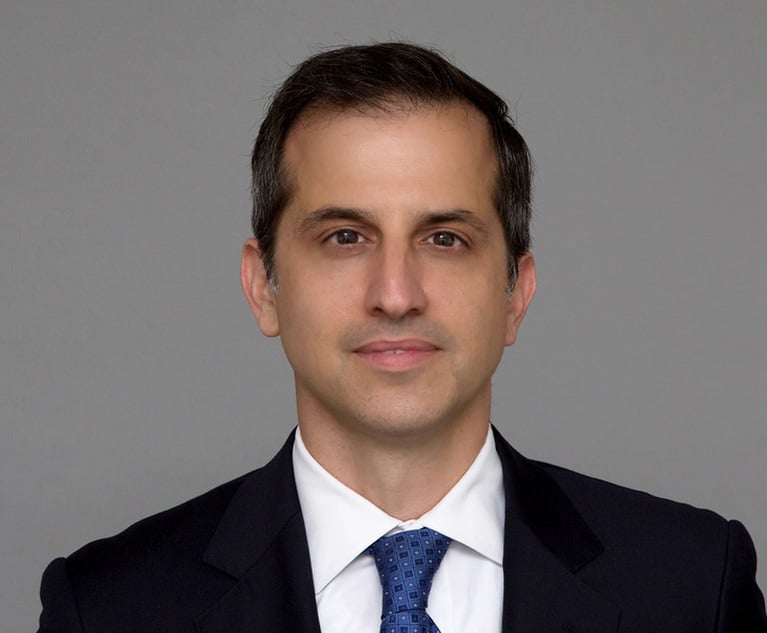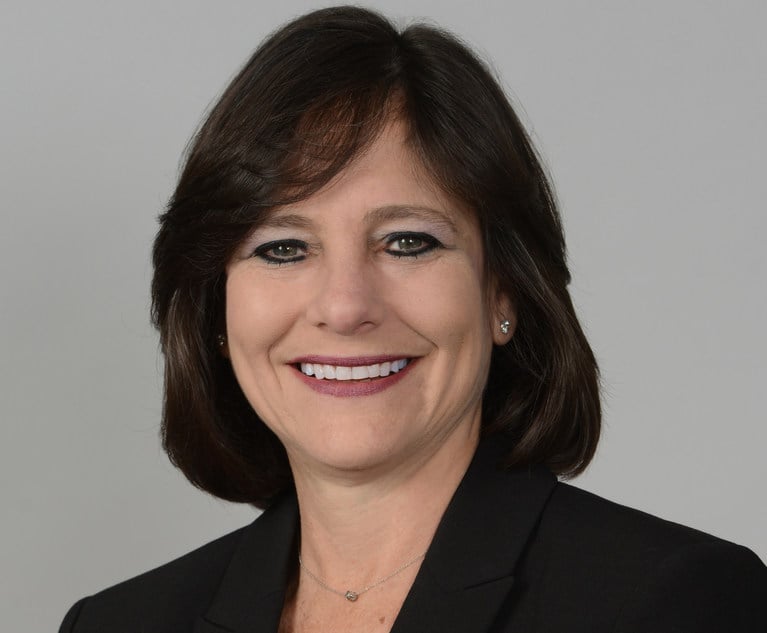Daily Dicta: Why Michelle Obama Disliked Working at Sidley—and the Lessons That Still Apply
In her autobiography, Michelle Obama offers a dismal depiction of the three years she spent as an associate at Sidley Austin, in part because there were so few other minority lawyers at the firm. But she didn't just complain--she tried to change things.
March 04, 2019 at 11:34 AM
7 minute read
 U.S. First Lady Michelle Obama speaks during the Democratic National Convention (DNC) in Philadelphia, Pennsylvania, U.S., on Monday, July 25, 2016. Photographer: Daniel Acker/Bloomberg
U.S. First Lady Michelle Obama speaks during the Democratic National Convention (DNC) in Philadelphia, Pennsylvania, U.S., on Monday, July 25, 2016. Photographer: Daniel Acker/Bloomberg
Her buffed walnut desk. Her view from the 47th floor overlooking Lake Michigan. Recruiting law students. The money.
That's what Michelle Obama liked about working at Sidley Austin.
What she didn't like: Everything else.
I've been reading Obama's autobiography “Becoming,” and have been struck by her dismal depiction of the three years she spent as an associate at the firm from 1988 to 1991.
The National Association for Law Placement puts out a periodic report it calls “Keeping the Keepers” about associate retention. Sidley for a brief time employed two of the keeping-est keepers you could imagine: Michelle Robinson and Barack Obama, who met in 1989 when he was a summer associate at the firm.
But both got away.
In hindsight, it seems clear that no matter how nice, how appreciative, how flattering Sidley leaders were to Barack (and according to Michelle, they were very), the 44th president was never going to pursue a career in Big Law. That was not his path.
 But the future first lady? The way she tells it in her autobiography, practicing law simply wasn't for her. “I hated being a lawyer. I wasn't suited to the work. I felt empty doing it, even if I was plenty good at it,” Obama wrote. But reading more closely, there are a few hints that under different circumstances, it might have been otherwise.
But the future first lady? The way she tells it in her autobiography, practicing law simply wasn't for her. “I hated being a lawyer. I wasn't suited to the work. I felt empty doing it, even if I was plenty good at it,” Obama wrote. But reading more closely, there are a few hints that under different circumstances, it might have been otherwise.
Obama has nothing unkind to say about any individual lawyers at the firm. As for Sidley as a whole—which through a spokeswoman declined comment—much of her criticism could apply to virtually any big firm circa 1990.
So what was the problem? And are things much different today?
One of Obama's objections was the isolating nature of the work. “I read memos. I wrote memos. I edited other people's memos.” But she said she had almost no contact with clients, and not much with other lawyers either.
“I craved interaction of any sort,” she wrote. “I had friendly professional relationships with some of the senior partners and perked up at any chance I had to chitchat with my fellow associates, but in general, everyone was overloaded with work and careful not to waste one billable minute of the day. Which put me back at my desk, alone with my documents.”
Obama was a member of Sidley's marketing and intellectual property group (that the two areas were combined is a reminder of the olden days when big firms mostly ceded IP work to boutiques). The group, she wrote, was “considered internally more freewheeling and creative than other groups, I suppose because we dealt at least some of the time with advertising. … I would later be awarded the honor of looking after the legal concerns of Barney the Dinosaur. (Yes, this is what passes for freewheeling at a law firm.)”
According to a 2008 story in The National Law Journal, Obama also “worked on teams that represented AT&T Corp. in its 1990 hostile takeover bid for NCR Corp. and Union Carbide Corp. in its 1990 legal fight to complete a sale of a chemical business unit to Arco Chemical Co. over Federal Trade Commission opposition.”
Her recollection of the Union Carbide work offers a sign that the law could have held her interest. “You wouldn't think I'd be the type of person to find psychic relief in the intricacies of the urethane polyether polyol trade, but I did,” Obama wrote, sounding like any budding litigator diving into a new subject.
But the case settled shortly after trial began, “which meant much of my document reviewing had been for nothing,” she wrote—an experience that she described as “irksome.”
Sound familiar anyone?
 Michelle Obama's Becoming book cover.
Michelle Obama's Becoming book cover.She did attempt to get more engaging work, and that's certainly one area where the firm could have done things differently. “I met with the partner in charge of my division, asking to be given more challenging assignments,” Obama wrote. She doesn't say how the partner responded—but since she subsequently quit, I suspect it didn't happen.
She wrote that she also “tried to focus on the projects I found most meaningful, including my efforts to recruit a new and more diverse crop of summer associates.”
Indeed, Obama was clear that she found the overwhelming white-ness of the place off-putting. She mentions that her assistant Lorraine was a “good-humored African American woman several years my senior,” but as for the other lawyers?
“[I]n our office, which employed more than four hundred lawyers, only about five full-time attorneys were African American,” she wrote.
Obama doesn't explicitly say so, but I wonder if some of the isolation she felt—both in the work itself and from her colleagues—might have had something to do with the fact that almost no other lawyers at the firm looked like her or shared her familiarity with “the barbershops, barbeque joints and Bible-thumping black parishes of the far South Side” of Chicago.
But she didn't just complain—she tried to do something to change it.
There's a lengthy passage in her autobiography where Obama describes her ideas to increase law firm diversity, which she made clear was an industry-wide issue, not a Sidley-specific problem.
Indeed, Obama cited a National Law Journal report that African Americans at big firms in 1990 made up less than 1 percent of partners and not quite 3 percent of associates. (Today, it's 2.09 percent of partners and 4.4 percent of associates, according to NALP's 2018 report on diversity.)
“My goal was to bring in law students who were not just smart and hard-driving but also something else than male and white,” Obama wrote. “I argued insistently—and I'm sure brazenly, in some people's opinion—that the firm cast a wider net when it came to finding young talent.”
That meant recruiting at schools other than Harvard, Stanford, Yale, Northwestern, the University of Chicago and the University of Illinois—where most of the firm's lawyers earned their J.D.s. Obama described it as “a circular process: one generation of lawyers hiring new lawyers whose life experience mirrored their own.”
“I pushed for us to consider law students coming from other state schools and from historically black colleges like Howard University,” she wrote. “I objected anytime a student was dismissed for having a B on a transcript or for having gone to a less prestigious undergraduate program. If we were serious about bringing in minority lawyers, I asserted, we'd have to look more holistically at candidates. We'd need to think about how they'd used whatever opportunities life had afforded them rather than measuring them simply by how far they'd made it up an elitist academic ladder.”
She doesn't say whether Sidley—which last year was squarely in the middle of the pack on the 2018 Am Law Diversity Scorecard, tied for 51st place—embraced her bold-at-the-time strategies to hire more minority lawyers.
I'm guessing the answer is no. In retrospect, it looks like a major missed opportunity.
This passage by Obama strikes me as key: “The point wasn't to lower the firm's high standards,” she wrote. “It was to realize that by sticking with the most rigid and old-fashioned way of evaluating a new lawyer's potential, we were overlooking all sorts of people who could contribute to the firm's success.”
This content has been archived. It is available through our partners, LexisNexis® and Bloomberg Law.
To view this content, please continue to their sites.
Not a Lexis Subscriber?
Subscribe Now
Not a Bloomberg Law Subscriber?
Subscribe Now
NOT FOR REPRINT
© 2025 ALM Global, LLC, All Rights Reserved. Request academic re-use from www.copyright.com. All other uses, submit a request to [email protected]. For more information visit Asset & Logo Licensing.
You Might Like
View All
Big Company Insiders See Technology-Related Disputes Teed Up for 2025

Litigation Leaders: Jason Leckerman of Ballard Spahr on Growing the Department by a Third Via Merger with Lane Powell

Litigation Leaders: Greenspoon Marder’s Beth-Ann Krimsky on What Makes Her Team ‘Prepared, Compassionate and Wicked Smart’
Trending Stories
- 1Meta Pulls Plug on DEI Programs
- 2On the Move and After Hours: Meyner and Landis; Cooper Levenson; Ogletree Deakins; Saiber
- 3State Budget Proposal Includes More Money for Courts—for Now
- 4$5 Million Settlement Reached With Stone Academy
- 5$15K Family Vacation Turned 'Colossal Nightmare': Lawsuit Filed Against Vail Ski Resorts
Who Got The Work
Michael G. Bongiorno, Andrew Scott Dulberg and Elizabeth E. Driscoll from Wilmer Cutler Pickering Hale and Dorr have stepped in to represent Symbotic Inc., an A.I.-enabled technology platform that focuses on increasing supply chain efficiency, and other defendants in a pending shareholder derivative lawsuit. The case, filed Oct. 2 in Massachusetts District Court by the Brown Law Firm on behalf of Stephen Austen, accuses certain officers and directors of misleading investors in regard to Symbotic's potential for margin growth by failing to disclose that the company was not equipped to timely deploy its systems or manage expenses through project delays. The case, assigned to U.S. District Judge Nathaniel M. Gorton, is 1:24-cv-12522, Austen v. Cohen et al.
Who Got The Work
Edmund Polubinski and Marie Killmond of Davis Polk & Wardwell have entered appearances for data platform software development company MongoDB and other defendants in a pending shareholder derivative lawsuit. The action, filed Oct. 7 in New York Southern District Court by the Brown Law Firm, accuses the company's directors and/or officers of falsely expressing confidence in the company’s restructuring of its sales incentive plan and downplaying the severity of decreases in its upfront commitments. The case is 1:24-cv-07594, Roy v. Ittycheria et al.
Who Got The Work
Amy O. Bruchs and Kurt F. Ellison of Michael Best & Friedrich have entered appearances for Epic Systems Corp. in a pending employment discrimination lawsuit. The suit was filed Sept. 7 in Wisconsin Western District Court by Levine Eisberner LLC and Siri & Glimstad on behalf of a project manager who claims that he was wrongfully terminated after applying for a religious exemption to the defendant's COVID-19 vaccine mandate. The case, assigned to U.S. Magistrate Judge Anita Marie Boor, is 3:24-cv-00630, Secker, Nathan v. Epic Systems Corporation.
Who Got The Work
David X. Sullivan, Thomas J. Finn and Gregory A. Hall from McCarter & English have entered appearances for Sunrun Installation Services in a pending civil rights lawsuit. The complaint was filed Sept. 4 in Connecticut District Court by attorney Robert M. Berke on behalf of former employee George Edward Steins, who was arrested and charged with employing an unregistered home improvement salesperson. The complaint alleges that had Sunrun informed the Connecticut Department of Consumer Protection that the plaintiff's employment had ended in 2017 and that he no longer held Sunrun's home improvement contractor license, he would not have been hit with charges, which were dismissed in May 2024. The case, assigned to U.S. District Judge Jeffrey A. Meyer, is 3:24-cv-01423, Steins v. Sunrun, Inc. et al.
Who Got The Work
Greenberg Traurig shareholder Joshua L. Raskin has entered an appearance for boohoo.com UK Ltd. in a pending patent infringement lawsuit. The suit, filed Sept. 3 in Texas Eastern District Court by Rozier Hardt McDonough on behalf of Alto Dynamics, asserts five patents related to an online shopping platform. The case, assigned to U.S. District Judge Rodney Gilstrap, is 2:24-cv-00719, Alto Dynamics, LLC v. boohoo.com UK Limited.
Featured Firms
Law Offices of Gary Martin Hays & Associates, P.C.
(470) 294-1674
Law Offices of Mark E. Salomone
(857) 444-6468
Smith & Hassler
(713) 739-1250







